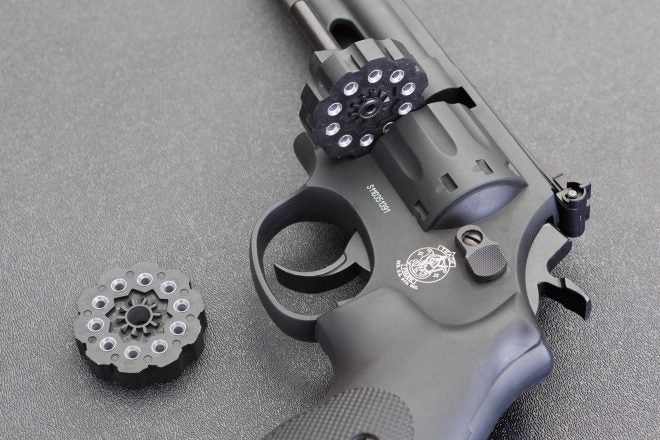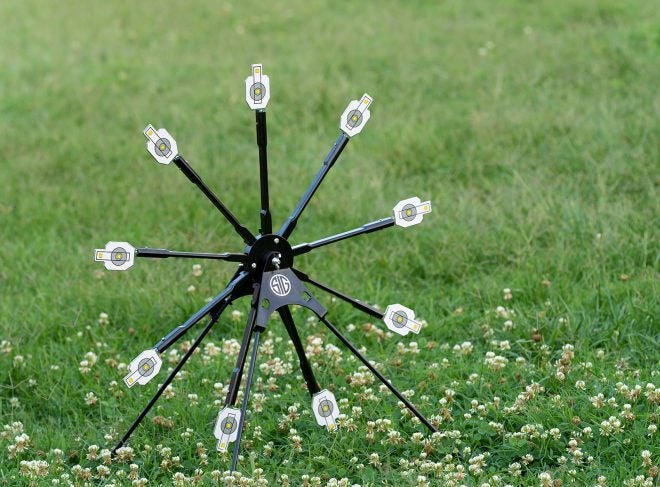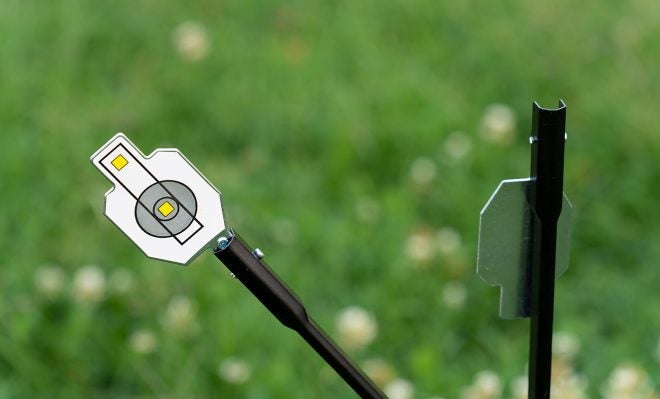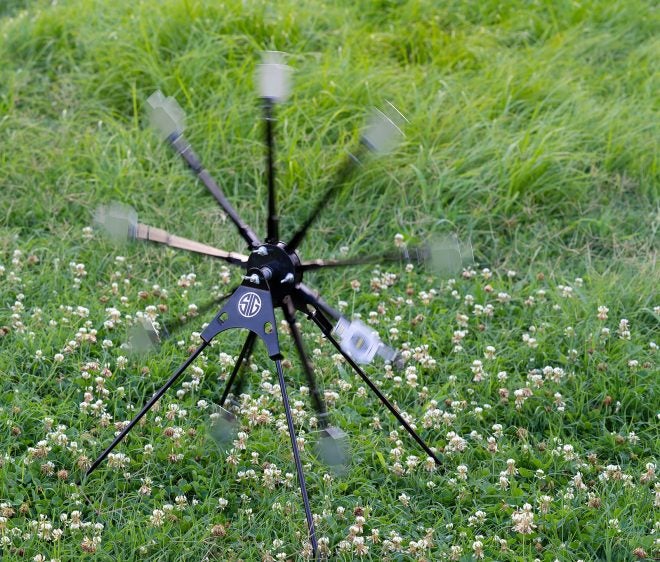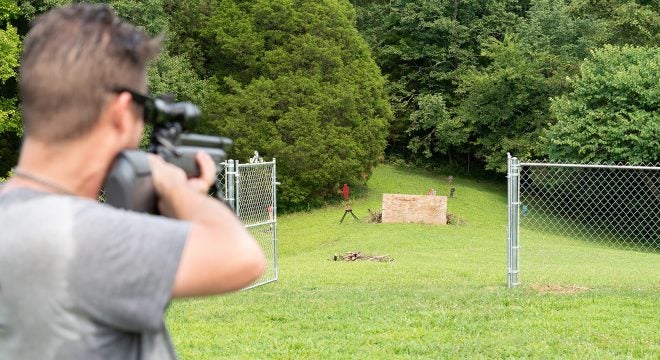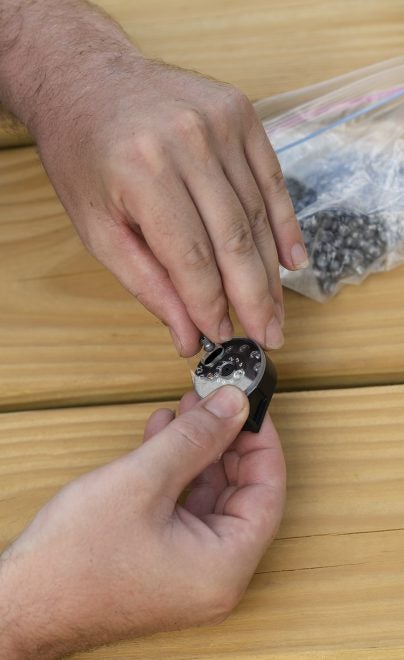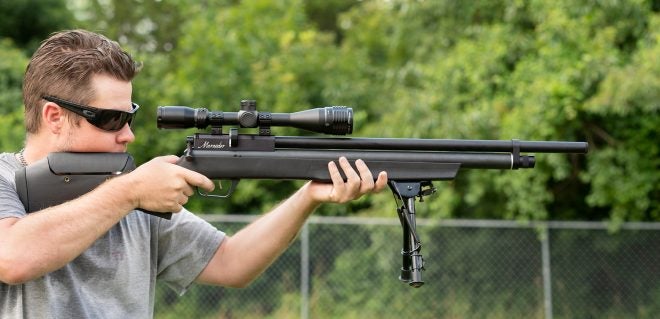Serious Marksmanship Training With Airguns
Oleg Volk 07.19.19

Sometimes .177 makes more sense than .308, that’s why we are diving in to training with airguns.
I have a 110-yard range available in my own back yard, plenty of guns and ammunition. With all that, I find myself using airguns increasingly frequently for training myself and others. There’s a good reason for that — separation of marksmanship basics from the gun handling tasks, as well as the reduction in shooter fatigue, reduction in noise, and saving ammunition for the types of training where air guns just won’t work.
With pistol, shooting stationary targets is fun but reaches the point of diminishing returns on training time. Shooting moving objects presents a couple of challenges: high expenditures of ammunition to reach basic competency, and minimum safe distance requirements for metallic targets. Using an air pistol with pellets or frangible BBs permits closer minimum shooting distance, along with greatly-reduced ammunition costs.
The miniature Texas Star shown here is a great way to work up to a full size one. The air gun version is cheap, light, and portable. The backstop requirements are minimized, so is the noise. My friends and I have each expended well over 200 shots each to get basic competency with it, which would have been slightly expensive with centerfire ammunition. What’s more, we could shoot it during the cool evening hours without worry about disturbing neighbors with the reports. The principle of operation is the same regardless of size: the first hit folds or displaces one of the impact targets, unbalancing the wheel and sending it into back-and-forth rotations.
This presents rather more challenge than still targets, especially if both ammunition and time are limited. Best out of ten shots over ten seconds often resulted in no hits at all, at first. A couple of hours later, we were running 40-50% hits with a smoothbore BB pistol at five yards. A rifled pellet gun improved the score further. Once competent with the noiseless, recoilless shooting, we can transition to rimfire and then centerfire practice. The only differences would be decreased lead required and having to control the weapon more due to recoil.
The same is true of rifle practice. This shooter started with a 308 AR10, then moved down to a .22 caliber suppressed air rifle. Shiny pellets exiting at about 1000 fps can be readily seen in flight through the scope, looking almost like white tracers. Prone or standing, being able to spot your own shots is a great help. The drop and the wind drift are greatly exaggerated relative to full-bore centerfire bullets, and even compared to rimfire. This way, 60-yard practice provides learning opportunities similar to 300-400 yard shooting with the AR10.
Pellets cost less than 2 cents each, compared to 40-50 cents for 308 ball. The wear on the shooter is also reduced, allowing concentration on the firing technique and spotting rather than fighting recoil and muzzle rise. Crosman Marauder, the rifle shown here, isn’t cheap but pays for itself as a training tool. Significantly cheaper options without sound suppression are available, and going down to .177 caliber reduces the cost of both the gun and the consumables.
Airguns won’t work for practicing recoil control, or for getting used to firearms manual of arms. They do work exceptionally well for practicing marksmanship basics. While air guns can deliver stellar accuracy, for our purposes, their external ballistic limitations like increased wind drift are a plus. Being able to see wind and gravity effects through the optic provides learning opportunities eminently applicable to longer distances and bigger guns.
